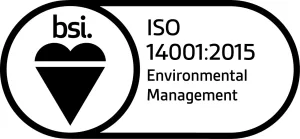The alignment of shafts is necessary for maintaining the health of your rotating machinery. Misalignment can cause an array of different issues and these issues persist if preventative action isn’t taken.
Misaligned shafts cause the following:
- Accelerated wear of machine
- Damaged bearings, seals, couplings or other components
- Unscheduled outages
- Decreased operational efficiency
- Shortening of machine life
- Hazards to personnel
Correct alignment reduces power consumption and increases output which is why Houghton International welcomes the new standard that addresses basic mounting, base issues and more.
What is the new standard?
The new standard, ANSI/ASA S2.75-17: Shaft Alignment Methodology is broken down into the following parts:
Part 1: General Principles, Methods, Practices, and Tolerances – For most common machine configuration.
Part 2: Vocabulary – Defines terms used in part 1 & part 3
Part 3: slated for publication in 2022 – For shaft alignment of vertical machines.
The ANSI/ASA S2.75-17 sets an industry-wide standard for shaft alignment tolerances and best practice as before; manufacturers would provide their own standards leading to varied approaches. ANSI/ASA S2.75-17 standardises the application of alignment concepts concerning relative positions of rotating shafts connected by mechanical means.
What is included in ANSI/ASA S2.75-17 standards?
It contains specific tolerances, factors affecting alignment, and an overview of various measurement methods, following the core technical components of Measure, Analyse, Correct, and Document.
Measurement
ANSI/ASA S2.75-17 covers how to determine offline shafts and centreline positions. It outlines the factors affecting the measurements and calibration. In further detail, it provides information on the factors that influences how you respond to alignment correction including machinery structural supporting, machinery degeneration and vibration from nearby machinery.
Analysis
The standard details the assessment for alignment needs and the conditions as well as alignment modelling.
Correction
ANSI/ASA S2.75-17 addresses controlled movement techniques and axial spacing or coupling gaps.
Informative Annexes
The document also includes a lot of useful information by providing annexes on the following:
- Alignment principles
- Formulas for calculating the moves at the feet from raw readings at the shafts
- Identifying and correcting pipe strain when performing shaft alignment on pumps
- Offline to running (OLTR) machinery movement
- Laser-detector systems
- Alignment modelling solutions
- Repeatability
- Alignment and machinery installation checklist
For more information on the annexes, see New ANSI/ASA Shaft Alignment Standard Adopted by Eugene Vogel, a pump and vibration specialist at EASA, Inc.
What does this mean for Houghton International Customers?
Houghton International continuously reviews Industry Standards in order to adopt the most safe, reliable and effective processes. We work closely with trade organisations such as EASA and AEMT to understand the latest standards and ensure staff follow industry best practice. We continue to comply with industry standards and on many occasions exceed requirements. This is demonstrated through our highly skilled team and the quality work we produce.
For more information on our motor, pump, generator and gearbox services visit our services page












